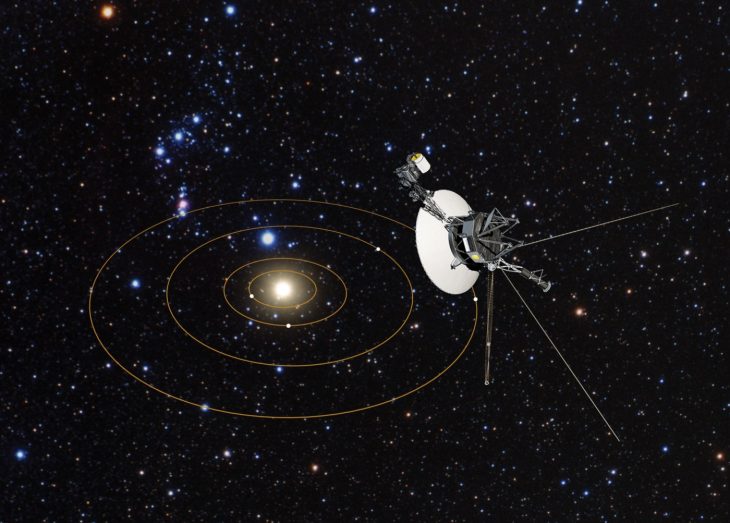Launched from Earth in 1977 to explore the world of Jupiter and Saturn, the twin Voyager probes are still alive and kicking, but not in the solar system. The two probes have been operating in interstellar space, crossing the heliospheric boundary where our Sun’s impact ends.
Known as the time capsule of a bygone era, the twin probes were initially designed for a mission lifetime of just five years, which was then extended to 12. However, they are still in touch with Earth via the Deep Space Network communicating regularly, although the communication time continues to increase as they move ahead in interstellar space.
While sending and receiving a message to Voyager-1 takes 21 hours 45 minutes 45 seconds each, its 18 hours 04 minutes and 08 seconds for the Voyager-2 mission. Managed and operated by the Jet Propulsion Laboratory, the mission remains at the cutting edge of space exploration and are the only probes to explore interstellar space the galactic ocean that our Sun and its planets travel through.
GOING WHERE THE SUN DOESN’T SHINE
While Voyager-1 escaped the heliospheric boundary in 2012, Voyager-2 followed it and entered interstellar space in 2018. The Sun and the planets reside in the heliosphere, a protective bubble created by the Sun’s magnetic field and the outward flow of solar wind.
“The heliophysics mission fleet provides invaluable insights into our Sun, from understanding the corona or the outermost part of the Sun’s atmosphere to examining the Sun’s impacts throughout the solar system, including here on Earth, in our atmosphere, and on into interstellar space,” Nicola Fox, director of the Heliophysics Division at Nasa said, adding that Voyager missions have been integral in providing this knowledge and have helped change our understanding of the Sun and its influence in ways no other spacecraft can.
The probes are carrying a golden record containing images of life on Earth, diagrams of basic scientific principles, and audio that includes sounds from nature, greetings in multiple languages, and music.
The two probes are in uncharted territory and it’s the first time that humans have been able to directly study how a star, our Sun, interacts with the particles and magnetic fields outside our heliosphere.
CHALLENGES ABOUND
Running a spacecraft for 45 years comes with challenges and Nasa’s new brigade has been working with the original Voyager teams to keep the spacecraft running. Powered by a radioisotope thermoelectric generator, which contains plutonium, keeping the mission alive has remained a challenge.
The probe, however, is pushing for its 50th anniversary and is likely to sustain another five years of space travel. In a tweet, it excitedly says, “While our power budgets will continue to get tighter, our team thinks we can continue to do science for at least another five years. I might get to celebrate my 50th launch anniversary or even operate into the 2030s!”
A marvel of engineering, physics, and chemistry, the scientific probe remains a cut above, not just from its competition but also from challenges in the vacuum of space.






